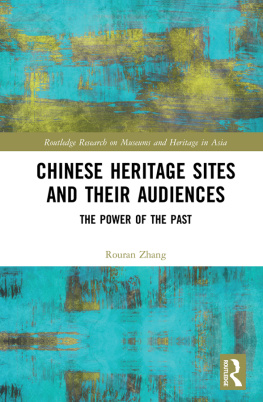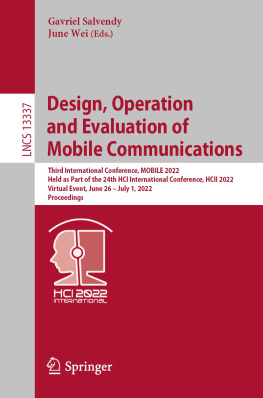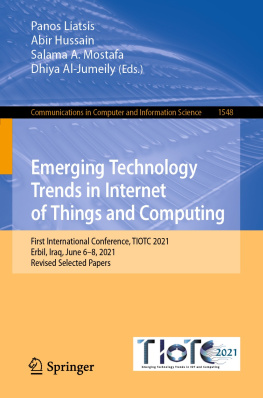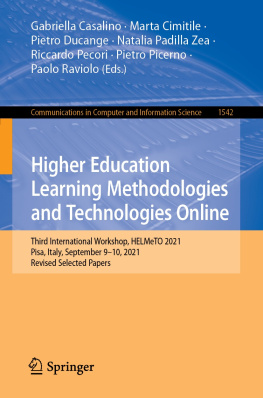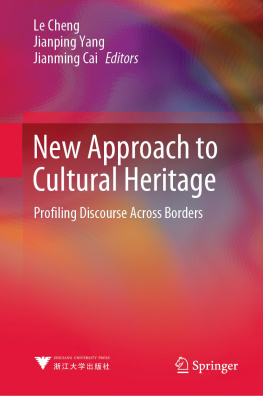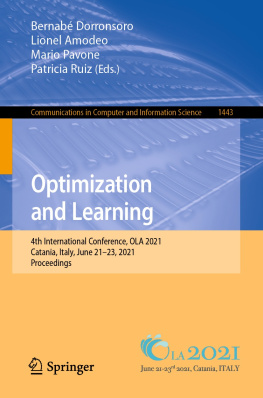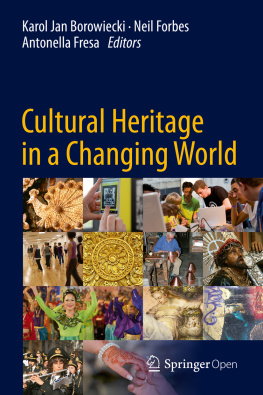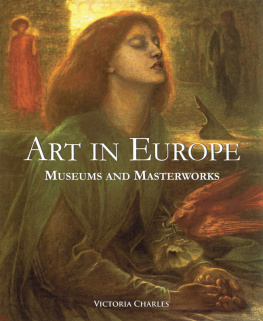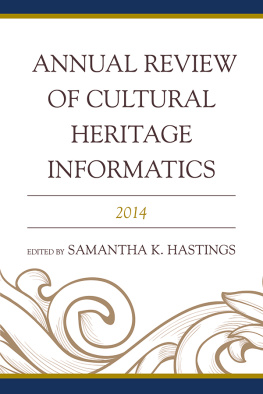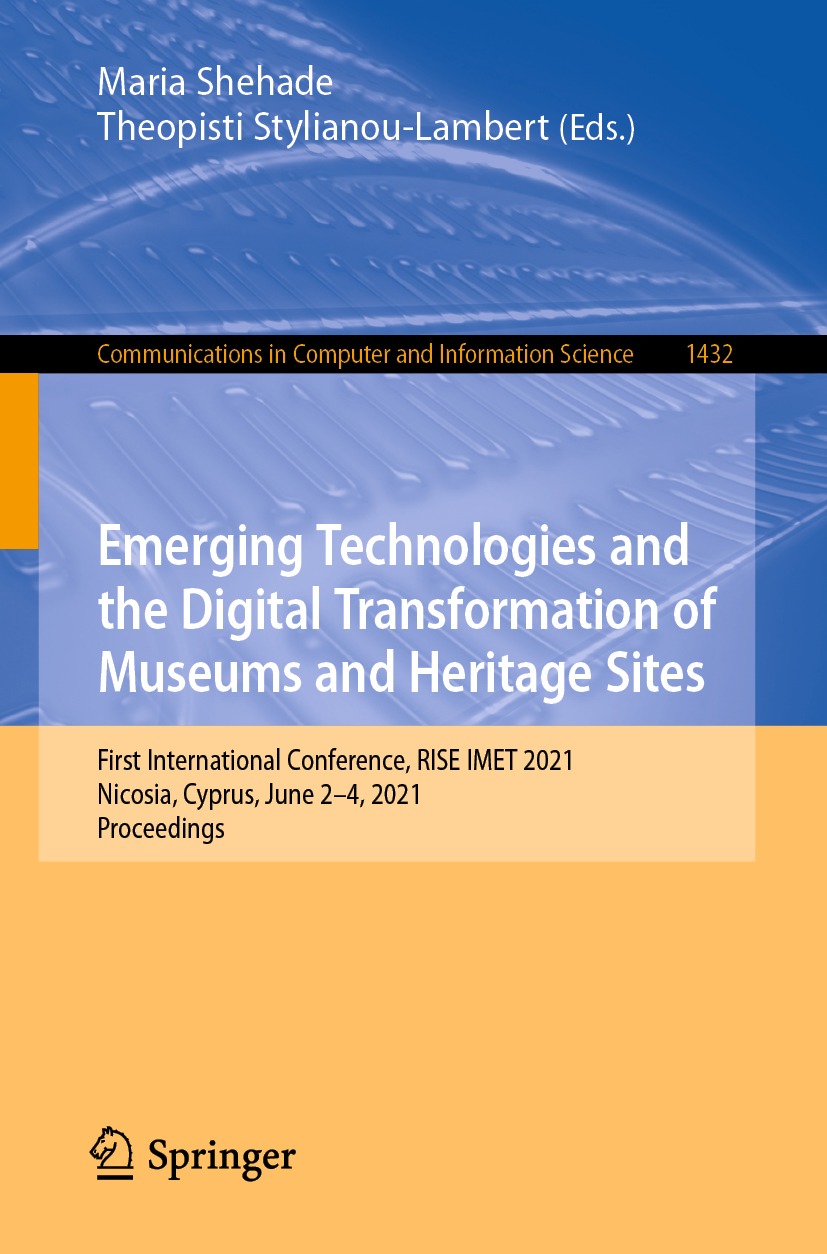Editors
Maria Shehade
CYENS Centre of Excellence, Nicosia, Cyprus
Theopisti Stylianou-Lambert
Cyprus University of Technology, Limassol, Cyprus
CYENS Centre of Excellence, Nicosia, Cyprus
ISSN 1865-0929 e-ISSN 1865-0937
Communications in Computer and Information Science
ISBN 978-3-030-83646-7 e-ISBN 978-3-030-83647-4
https://doi.org/10.1007/978-3-030-83647-4
Springer Nature Switzerland AG 2021
This work is subject to copyright. All rights are reserved by the Publisher, whether the whole or part of the material is concerned, specifically the rights of translation, reprinting, reuse of illustrations, recitation, broadcasting, reproduction on microfilms or in any other physical way, and transmission or information storage and retrieval, electronic adaptation, computer software, or by similar or dissimilar methodology now known or hereafter developed.
The use of general descriptive names, registered names, trademarks, service marks, etc. in this publication does not imply, even in the absence of a specific statement, that such names are exempt from the relevant protective laws and regulations and therefore free for general use.
The publisher, the authors and the editors are safe to assume that the advice and information in this book are believed to be true and accurate at the date of publication. Neither the publisher nor the authors or the editors give a warranty, expressed or implied, with respect to the material contained herein or for any errors or omissions that may have been made. The publisher remains neutral with regard to jurisdictional claims in published maps and institutional affiliations.
This Springer imprint is published by the registered company Springer Nature Switzerland AG
The registered company address is: Gewerbestrasse 11, 6330 Cham, Switzerland
Preface
The RISE IMET International Conference on Emerging Technologies and the Digital Transformation of Museums and Heritage Sites was conducted online during June 24, 2021. The conference was organized by the CYENS Centre of Excellence (formerly known as RISE), which constitutes a joint venture between the three public universities of Cyprus (University of Cyprus, Cyprus University of Technology, and Open University of Cyprus), the Municipality of Nicosia, the Max Planck Institute for Informatics (Germany) and University College London (UK). This was the first conference in a series of CYENS conferences focusing on Interactive Media, Smart Systems, and Emerging Technologies (IMET).
The first RISE IMET conference was dedicated to Emerging Technologies and the Digital Transformation of Museums and Heritage Sites. In particular, the conference was dedicated to the exploration of current practices in the use of emerging and interactive technologies such as augmented, mixed or virtual reality, holographic models, 3D models, artificial intelligence, sensors, and gamification in museums and heritage sites. The aim of this conference was to promote critical and interdisciplinary approaches and conversations between participants from diverse fields and to encourage dialogue between academics and professionals from various backgrounds on digital advances, innovation, and their impact on the field of cultural heritage. Thus, the conference was addressed to academics and professionals from the fields of museum studies, cultural heritage, computer science, heritage management, artificial intelligence, visual arts, and cognitive science, amongst others, and it aimed to provide an interdisciplinary platform to discuss state-of-the-art developments in academia and industry, as well as opportunities for networking and collaboration through a series of keynote addresses and presentations.
The conference offered a variety of themes, focusing on many different types of technologies as well as different key discussions, such as the advantages, challenges and limitations of emerging technologies, current theoretical and practical approaches in digital heritage, emerging trends in the digital presentation, interpretation and management of cultural heritage, issues of immersion and authenticity, and the application of emerging technologies in specialized areas of cultural heritage (e.g. contested heritage, cultural tourism, education and museum pedagogy, participatory practices, etc).
A total of 119 submissions were received from authors in more than 27 countries, including the USA, the UK, the Philippines, Estonia, Austria, Greece, France, Australia, Cyprus, Spain, Norway, Finland, the Netherlands, China, Sweden, Germany, Argentina, Israel, Russia, Mexico and Italy, amongst others. All submissions went through a rigorous review process to ensure that the best quality papers were selected for presentation.
This volume includes 23 selected papers from the conference. All full papers went through a rigorous double blind review process involving at least three independent reviewers. The Scientific Committee made a tremendous effort to ensure fairness and consistency throughout the review process.
The volume is structured around six main themes: Digital curation and visitor engagement in museums and heritage sites; VR, AR, MR, mobile applications, and gamification in museums and heritage sites; Digital storytelling and embodied characters for the interpretation of cultural heritage; Emerging technologies, difficult heritage, and affective practices; Participatory approaches, crowdsourcing, and new technologies; Digitization, documentation, and digital representation of cultural heritage. Through these themes, the proceedings volume covers many aspects of different applications of emerging technologies in museums and heritage sites, offering insights on both the technical aspects and challenges faced and the interpretive aspects of the museum experience, as well as on the visitor/user experience. The papers also cover and discuss a variety of different technologies such as VR, AR, MR, gamification, virtual humans (avatars), projections and holograms, 3D scanning and photogrammetry, digital archival practices and digitization tools, NKRL (Narrative Knowledge Representation Language) tools, and sonic practices, amongst others.
The collection of papers comes from authors from universities, research centres, and museums and heritage organizations, showcasing case studies and collaborative research amongst various actors and countries, and presenting different approaches and challenges found in different parts of the world. The selected papers are also indicative of the interdisciplinary nature of the conference, since many author groups consist of a mixture of collaborating scientists (coming from the fields of technology or computer science, museums and heritage, and digital humanities) showcasing interdisciplinary endeavors and research, which was the main aim of RISE IMET.


